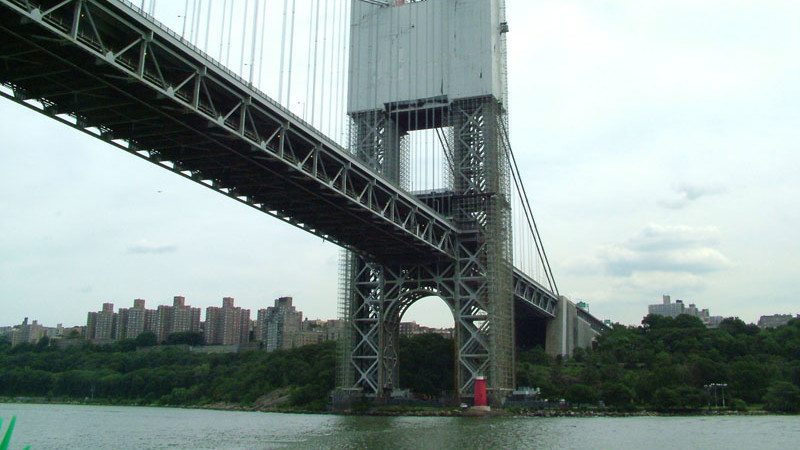Recently, a bipartisan group of 17 governors signed a letter to Congress asking that highway funding be restored. You may not have heard, but the federal Highway Trust Fund is expected to run out in 2014. This may not cause you any alarm as you read it, but that source drying out could create major problems for the States in the years ahead.
The gasoline tax funds the highway trust, but that source does not provide the revenue it once did. Despite bipartisan desire for funding to be restored, people are not exactly sure how to do it. Few have the political will to raise the gas tax, a regressive tax that has a major effect on the economy at large; almost every good needs gas to get to market and most people use gas to get to work.
This policy decision will matter to the American people for years to come. Many major infrastructure projects of the past are still functional today: the Golden Gate Bridge, the Brooklyn Bridge, the Panama Canal, the Erie Canal. The Chris Christie George Washington Bridge firestorm is partially due to the fact that infrastructure has not caught up with the growth in the number of people who live in New York and New Jersey–the George Washington Bridge operates over capacity. Of course, that is at least partially Christie’s fault for rejecting federal money to create a new tunnel to take pressure off the bridge.
As stated before, the Highway Trust Fund receives money from the federal gas tax, which takes 18.3 cents per gallon of gasoline and 24.4 cents per gallon of diesel fuel. The accounts in the Highway Trust Fund go to major transportation projects, such as the new Sakonnet River Bridge that connects mainland Rhode Island and Newport. That new bridge, which was subsidized by funds from the Highway Trust Fund, represents just one of thousands of roads, bridges, and rail lines across America in need of repair. Worries about highway budgets in the future led to tolling the bridge to increase revenue. Federal funds tend to be for new construction, not maintenance. For this reason, states implement tolls to create revenue for maintenance of major infrastructure.
And America’s bridges need every dollar they can get. In 2013, the American Society of Civil Engineers gave America’s bridges a C+ on America’s Infrastructure Report Card. America has 66,749 structurally deficient bridges in need of repair or replacement and over 80,000 functionally obsolete bridges. Looking at this map of America’s bridges is enough to make you think twice about getting in a car ever again. Providence County, RI, alone boasts 651 bridges, 95 of which are structurally deficient and 138 that are functionally obsolete. Federal Highway Administration officials estimate it will take over $20.5 billion a year to get the nation’s bridges up to standard by 2028.
Fuel taxes started with a simple concept: the more someone drives (uses the roads), the more they buy gas, so the more they pay. A high road user pays more than a low road user. However, a few things have gotten in the way of this logic: more Americans have moved to major cities with public transportation, younger people drive less than preceding generations did and more and more consumers are purchasing fuel-efficient cars. Finally, the gas tax has not been increased since 1993. In that time, the Consumer Price Index has increased 90 points. For all these reasons, the buying power of the trust fund has diminished since it was created, up to the point where it may run out this year.
Even though highway funding is not the most exciting of topics, this debate is one to watch for this year. Americans rely on this infrastructure every day. Keeping the infrastructure up to date matters for both the economy and the safety of our citizens.
Author’s Note: I appreciate the kind people at RI Department of Transportation alerting me to an error in the previous version of this post. The error has been corrected.
